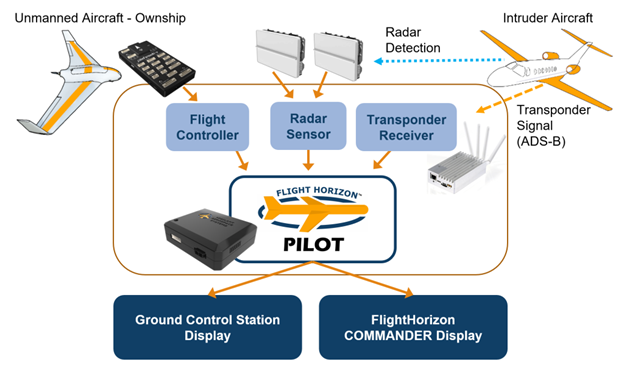Vigilant Aerospace has provided an update on the project for the Air Force Research Laboratory (AFRL) to develop a detect-and-avoid (DAA) system for the Air Force’s new long-endurance Group V drone. The company is providing FlightHorizon PILOT, its onboard DAA product, to the military.
This project is designed to fill important capability gaps quickly and to utilise technologies that have a high-impact, near-term implementation path for the military as well as having a potential civilian market. FlightHorizon PILOT is dual-use, suitable for both military and civil applications. It is designed to consume sensor data, detect nearby aircraft and provide collision avoidance commands to remote pilots or to the onboard autopilot.
Sharing progress, Vigilant Aerospace said the FlightHorizon PILOT system has been effectively tested with multiple radars operating simultaneously, allowing it to obtain a wide field of regard for air traffic detection that helps the product to meet industry technical standards for both onboard DAA and to support distributed sensor nodes when used on the ground.
In addition, radar frequency channelisation has been utilised and tested to demonstrate that multiple radars can be used without interference with each other. The system has also been integrated to multiple ground control stations (GCS), including the popular Ardupilot open-source software and other widely used government and civilian GCS systems.
Vigilant has deployed the software to multiple low space, weight and power (low-SWaP) computers for onboard use, including multiple single-board computers, in an effort to ensure it can be installed on a wide variety of both military and civilian aircraft.
Looking Beyond the AFRL project, the development and testing of the FlightHorizon PILOT product can bring additional capability to the civilian Advanced Air Mobility (AAM) market, which is also growing quickly and requires onboard collision avoidance and DAA as much as military aircraft do.
For more information




